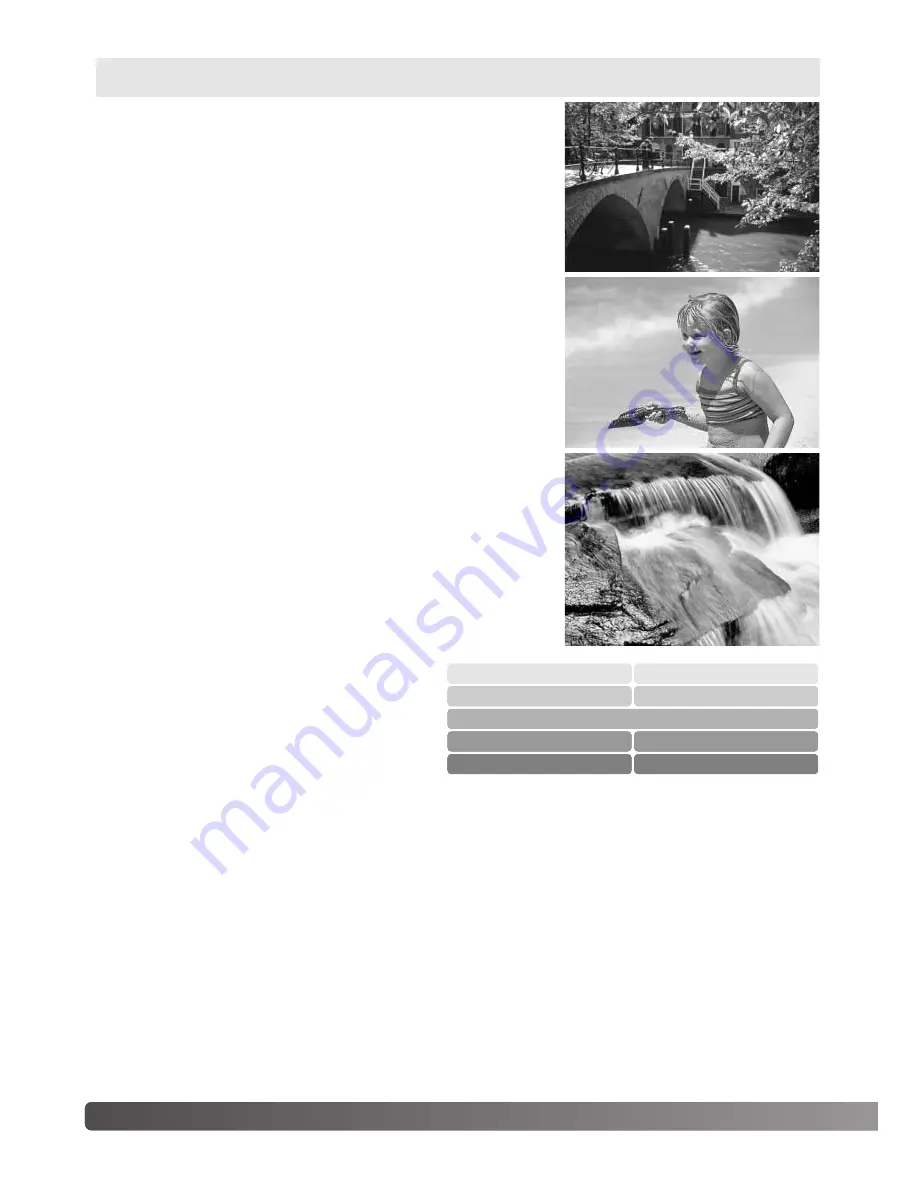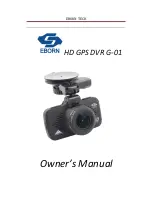
82
A SHORT GUIDE TO PHOTOGRAPHY / USB-TRANSFER MODE
The lens aperture controls not only exposure, but also depth of
field; the area between the closest object in focus and the fur-
thest object in focus. The larger the aperture value, the greater
the depth of field and the longer the shutter speed needed to
make the exposure. The smaller the aperture value, the shal-
lower the depth of field and the faster the shutter speed need-
ed to make the exposure. Usually landscape photographs use
a large depth of field (large aperture value) to keep the fore-
ground and background in focus, and portraits use a shallow
depth of field (small aperture value) to separate the subject
from the background.
Depth of field also changes with focal length. The shorter the
focal length, the greater the depth of field; the longer the focal
length, the shallower the depth of field. Wide-angle lenses also
create a strong perspective which gives a sense of depth in
the image. Telephoto lenses compress the space between the
subject and background and create a weak perspective.
The shutter controls not only exposure, but also the ability to
stop motion. Fast shutter speeds are used in sport photogra-
phy to stop action. Slow shutter speeds can be used to show
the flow of motion such as water cascading over a waterfall.
The use of a tripod is recommended with slow shutter speeds.
Ev stands for exposure value. A change of one
Ev adjusts the exposure by a factor of two.
What is an EV?
+2.0 EV
4X as much light
+1.0 EV
–1.0 EV
–2.0 EV
2X as much light
1/2 as much light
1/4 as much light
Calculated exposure
A short guide to photography














































